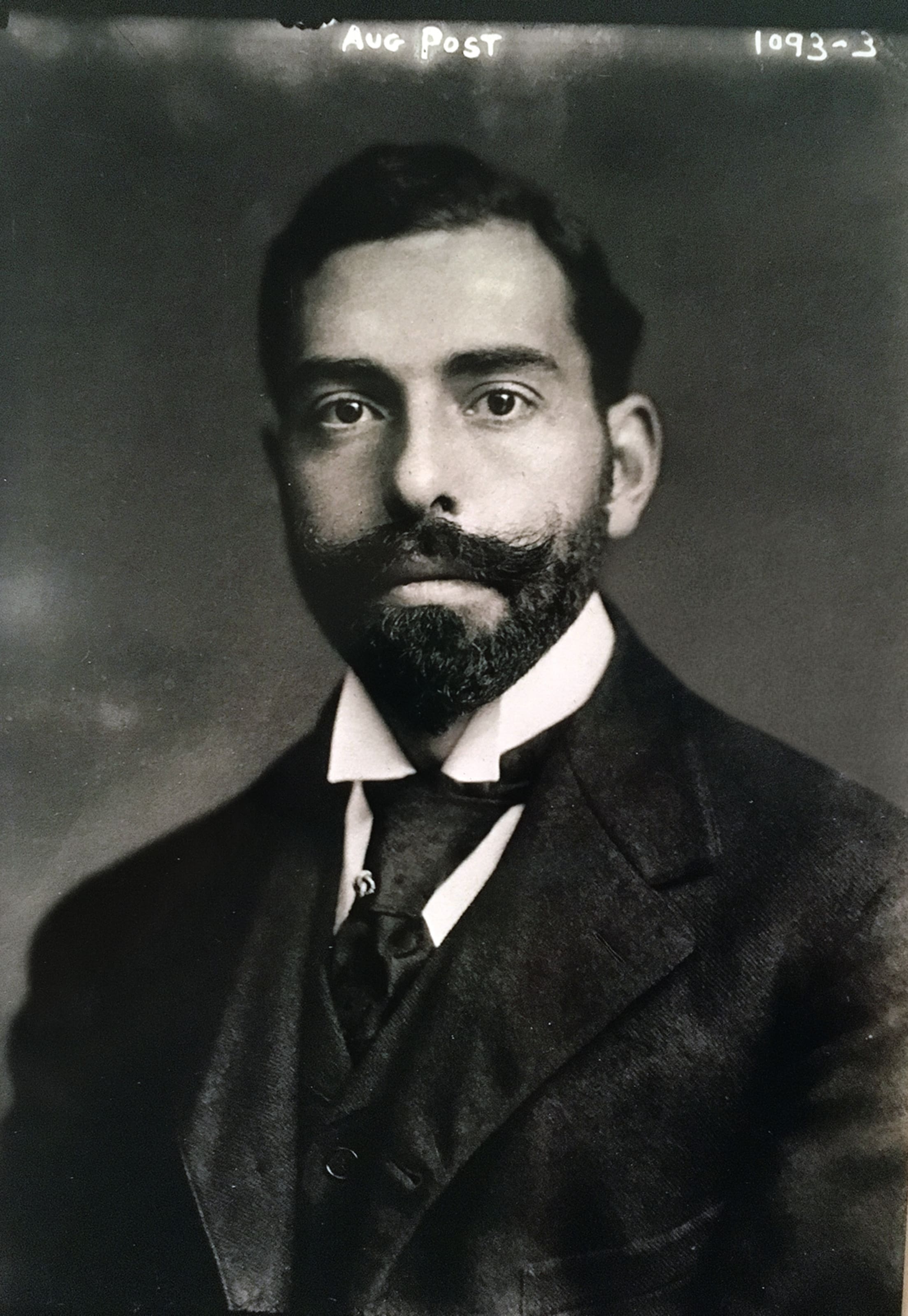
The Amazing Adventures of Augustus Post
He was an intrepid pioneer of both automobiling and aviation. He was also a founder of AAA.

The 15th-century figures who inspired the phrase Renaissance man set a high bar for versatility. Leonardo da Vinci was a painter, sculptor, physicist, inventor, philosopher, astronomer, and naturalist. His contemporary Leon Battista Alberti was an architect, artist, poet, and cryptographer who could reportedly jump over the head of a man standing next to him.
There are few 20th-century examples of such multifaceted genius. But one modern-day New Yorker comes close. Augustus Post was a pioneering automobile driver and airplane pilot, a balloonist, and an accomplished outdoorsman, author, actor, lecturer, and musician. And in case you're wondering why you're reading about him here, Post also helped found AAA.
Yet he is almost completely unknown today.
Augustus Post was born in Brooklyn in 1873. Raised in affluence, he was noted in high school for his singing and banjo skills. He attended Amherst College, where he competed as a speed walker. Then, after attending Harvard Law School, he discovered his life's obsession with transportation.
Post bought his first car at a motorcycle rally in 1898. Two years later, he commissioned a steampowered car from auto manufacturer Thomas White. In 1903, after he and a friend drove that White Steamer from Pittsburgh to New York, Post made the visionary suggestion that, if the old pike road in Pennsylvania were resurfaced, it could become "the first link in the transcontinental boulevard." The Good Roads movement that Post ardently supported culminated in 1913 with the opening of the Lincoln Highway from New York to San Francisco. One section of it indeed went through Pittsburgh.
In 1904, Post helped launch an auto race from New York to St. Louis, Missouri, which became an annual event known as the Glidden Tours. Along the route of the race, thousands of small-town Americans turned out to watch—and, in many cases, get their first glimpse of this new technology.
Post was the first person to drive a car in New York City, established the city's first parking garage, and received its first speeding ticket. (He was going five miles per hour in Central Park.)
As cars became more common, auto clubs began to spring up across the country, campaigning for better roads. Post helped promote the formation of such clubs, and ended up taking on leadership positions within the nascent American Automobile Association in its first years of existence.
In an age when ballooning was wildly popular, Post was also one of the great aeronauts. He gained fame for his exploits in the Gordon Bennett Cup, a balloon race that's still going strong, which rewards the balloonist who flies farthest from a starting point. Post competed for the cup five times, surviving a hair-raising crash in 1908 when his balloon dropped 3,000 feet and plunged through the roof of a house in a Berlin suburb.

A portrait of Augustus Post in 1906.
In 1910, he and a partner set off from St. Louis, landing two days later in a remote Canadian wilderness. Using the outdoors skills he had learned as a youth, he helped his injured friend make it to a nearby town. (Post was an original member of the Society of the Sons of Daniel Boone—a precursor to the Boy Scouts.) New York received them with a hero's welcome. The distance and duration records they set for the race—1,173 miles in 44 hours, 25 minutes— remained unsurpassed for 95 years.
The sangfroid that Post developed as a balloonist served him well as a pilot. In 1908—after wrecking several planes, which some of his friends facetiously blamed on his then unusual Vandyke beard—he became the 13th man in the United States to successfully fly. As he had done with the automobile, Post proselytized for air travel, advocating for the creation of an airmail service, coining the term airport, and encouraging women and minorities to fly. During World War I, he supported American pilots in England and France, and acted as a Four-Minute Man, delivering quick public speeches urging his countrymen to back the war effort.
Not satisfied with being a groundbreaking driver, virtuoso balloonist, daredevil pilot, and transportation visionary, Post also appeared as an actor (in 103 performances of a Broadway show called Omar the Tentmaker); wrote books, poems, and the libretto for an opera; and gained fame for his ability to imitate the sounds of aircraft and birds.
Post died of a heart attack in 1952 at the age of 78. By the end of his astonishing life, the two forms of transportation that he championed in their infancy—the automobile and the airplane—had conquered the world.

Augustus Post—dressed in au courant driving coat and cap—behind the wheel of 1905 Glidden Tour car.
Post Production
Augustus Post led the kind of life that makes people say, "That sounds like a movie." Which is just what AAA has made: a short documentary about Post, titled The Unforgettable Augustus Post and produced by John Moreno (of A3 Productions) in association with Bread and Butter Films, with animation by WeWereMonkeys. It's expected to hit the film festival circuit later this year.